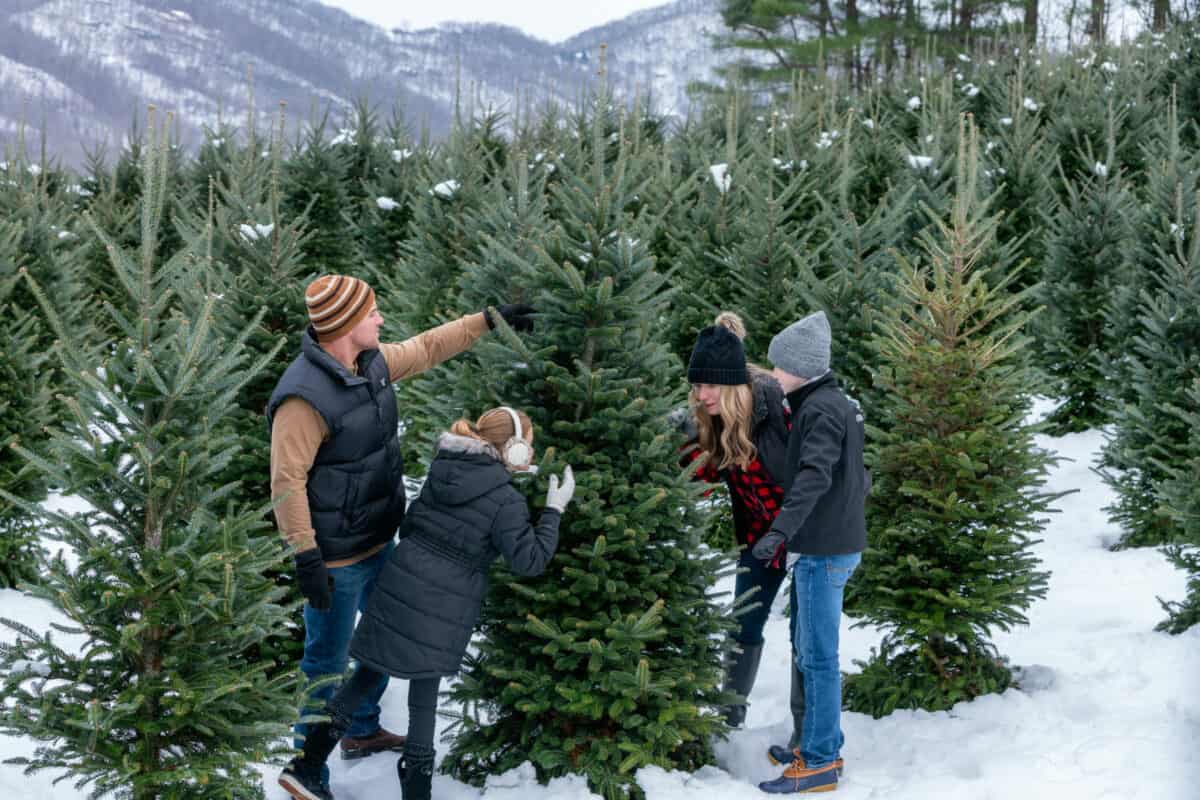Christmas Trees
go.ncsu.edu/readext?901026
en Español / em Português
El inglés es el idioma de control de esta página. En la medida en que haya algún conflicto entre la traducción al inglés y la traducción, el inglés prevalece.
Al hacer clic en el enlace de traducción se activa un servicio de traducción gratuito para convertir la página al español. Al igual que con cualquier traducción por Internet, la conversión no es sensible al contexto y puede que no traduzca el texto en su significado original. NC State Extension no garantiza la exactitud del texto traducido. Por favor, tenga en cuenta que algunas aplicaciones y/o servicios pueden no funcionar como se espera cuando se traducen.
Português
Inglês é o idioma de controle desta página. Na medida que haja algum conflito entre o texto original em Inglês e a tradução, o Inglês prevalece.
Ao clicar no link de tradução, um serviço gratuito de tradução será ativado para converter a página para o Português. Como em qualquer tradução pela internet, a conversão não é sensivel ao contexto e pode não ocorrer a tradução para o significado orginal. O serviço de Extensão da Carolina do Norte (NC State Extension) não garante a exatidão do texto traduzido. Por favor, observe que algumas funções ou serviços podem não funcionar como esperado após a tradução.
English
English is the controlling language of this page. To the extent there is any conflict between the English text and the translation, English controls.
Clicking on the translation link activates a free translation service to convert the page to Spanish. As with any Internet translation, the conversion is not context-sensitive and may not translate the text to its original meaning. NC State Extension does not guarantee the accuracy of the translated text. Please note that some applications and/or services may not function as expected when translated.
Collapse ▲A favorite holiday tradition for many people of Sampson County is making the trek to the mountains to purchase a NC grown Christmas tree for the holidays. If this has not been a tradition in your family, the good news is that you can start this year and begin making memories that you and your family will talk about for many years to come.
According to the NC Christmas Tree Association, there are over 40 registered choose & cut farms that your family can meander through in search of the perfect Christmas tree in the mountains of NC. You can find these farms listed at ncchristmastrees.com. Mountain choose & cut farms predominantly grow Frasier fir, the number 1 sought out Christmas tree in the US. 99.4% or 40,000 acres of all the Christmas trees grown in NC are Frasier fir. You may also find some species of white pine, Colorado blue spruce, Concolor fir or other fir species at mountain farms.
Before setting out to buy a tree, you should determine where the tree will be displayed in the home and measure the available space. I recently was told a story where a family went to the mountains and paid over $500 for a 14-foot-tall tree, only to return home and find that their largest room had a ceiling of only 10 feet. They had to cut 5 feet off of the bottom of the tree for it to fit in their room. Make sure to buy a tree that will fit in the space. Also consider whether all sides of the tree will be displayed. Cheaper trees normally have two good adjacent sides that present well in the corner of a room. If the tree will be visible from all sides, a premium-grade tree may be more desirable.
Once you select the right size tree and get it home don’t just decorate it and forget it. Try to keep your tree as fresh as possible as to avoid the tree drying out and becoming a fire hazard. If the tree was pre-cut, cut at least ½ inch off of the trunk of the tree and put it in a bucket of water 24 hours before bringing it into the home. Display the tree in a tree stand that can hold at least a gallon of water. Check the water level daily to make sure there is enough and that the tree is taking up water. Don’t put any “Christmas tree additives” in the water – fresh water is all the tree needs. Make sure to place the tree away from heat sources, fireplaces, wood stoves, radiators, and vents to avoid drying the tree out. Turn off decorative lights when leaving the home or going to bed. Lastly, don’t be like Clark Griswold and overload electrical circuits.
Once Christmas is over and you take the tree down it can be recycled. Recycling choices include chipping into mulch, wind and water barriers at the beach and along rivers for erosion control, sunk into ponds as fish attractants, or used as a feeding station or shelter for songbirds in the landscape. For more information on NC Christmas trees, see the NC State Extension publication “Selection and Care of Living Christmas Trees”.




